Scaling Facebook Ads profitably is one of the toughest challenges digital advertisers face. The more money you spend, the higher the CPMs (cost per million impressions) and CPAs (cost per acquisition) seem to rise.
Well… at least that’s how it used to be, before the arrival of Facebook Power 5.
For years, advertisers have used “data science” to win their way into the hearts of the perfect Facebook audience. “If only I can find that one niche audience everything will turn around.” That’s all we ever hear from onboarding clients.
I’m here to tell you that the days of numerous campaigns, ad sets, and dozens (and dozens, and dozens) of audiences are over.
As Facebook grows more advanced, leveraging the algorithm and machine learning is the way of the future that will lead to easier, more scalable success moving forward. How do we know? Well, we’ve tried it.
We’ve seen some seriously impressive results from using Facebook Power 5:

- We’ve been able to scale ad spend of a subscription client by 200% while dropping their CPA 10% and generating 250% more signups
- We increased sales by 136% while reducing cost per purchase by 38% for a shoe-based eCommerce retailer
- And we even were able to boost purchases by 102% for a lead gen/eComm hybrid company, al while cutting CPA by 45% (on the lead gen side we increased leads 27% and cut cost per lead by 13%)
If you’re looking for more reasons to take a look at Facebook Power 5, you can check out the step-by-step walkthrough of why it’s so awesome—and more importantly, how to do it—in this post.
Get brand new Facebook ad strategies straight to your inbox every week. 23,739 people already are!
What is Facebook Power 5 and where did it come from?
Aside from it being messy and hard to manage, the cost of rising CPMs is making it too hard to “hack” the system.
The way of the future is the “Facebook Power 5” method, coined and introduced by Facebook as their “best practices” for direct response advertisers. This new playbook highlights 5 total tactics, that if followed should dramatically improve your Facebook ads performance:
- Account Simplification
- Campaign Budget Optimization
- Automatic Placements
- Auto Advanced Matching
- Dynamic Ads
Not only have we seen huge wins from implementing the Facebook Power 5 (like this one), but the biggest advertisers in the world, like Bombas and Hello Fresh, have too.
But this tactic isn’t just for advertisers with massive budgets. Any direct response advertiser can use this tactic to their advantage.
Why Facebook Power 5 works for everyone
The key to the success of the Facebook Power 5 method is tapping into the machine learning and automation of Facebook’s algorithm.
Rather than niching down your audience targeting, you go simpler and broader with your targeting and really focus your wins with creatives. In doing so, you significantly reduce your CPMs which in turn reduce your CPCs (cost per click), which in turn helps reduce your CPAs.
With this in mind, let’s start off with the first Facebook Power 5 tactic: Account Simplification.
1. Account simplification
Like I said earlier, the days of hyper-granulation are over. Whether that’s creating Facebook campaigns by specific placements, specific niche audiences, or specific demographics, hyper-targeting your Facebook campaigns isn’t how you’re going to find success.
Those tactics may have worked well in the past, but they’re no longer strategies that help you scale. On top of that, they also cause unnecessary redundancies and confusion.
By simplifying your account structure with fewer campaigns and ad sets you’re allowing Facebook’s algorithm to test (in real-time) which placements, audiences, and ad creatives are driving performance.
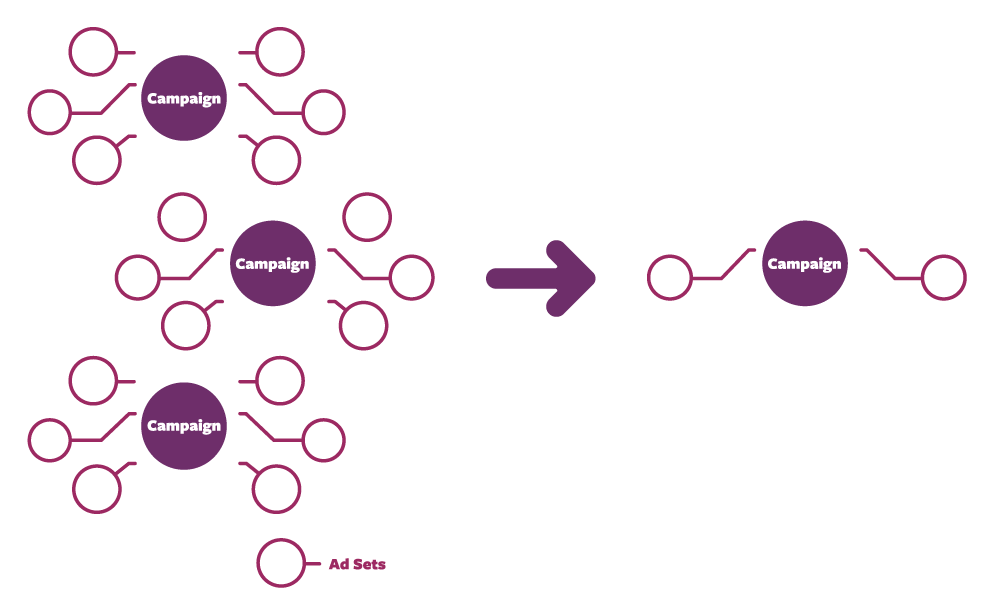
So, what does account simplification actually look like?
Every advertiser has its own set of nuances, challenges, and unique problems to face. So there’s not really one “catch-all” method of account structure.
With that said, most B2C advertisers can follow a simplified account structure that has 3 or 4 campaigns max. What does this look like? A little something like the outline below:
- Prospecting (Top of Funnel)
- Broad Interests Related to product
- Lookalikes 1%
- Lookalikes 1-5%
- Reengagement (Mid Funnel)
- Instagram & Facebook post/ad engagers
- Video Viewers
- Remarketing (Bottom Funnel)
- All Page Visitors
- Cart Abandoners
- Dynamic Product Ads (DPAs) (Bottom Funnel)
- If your brand has a catalog, then create DPA retargeting
- If you are a B2C service or only sell 1 product, then DO NOT use this method and only use the above 3 campaigns
By shifting to this simplified structure, you can tap into machine learning’s true value and focus on creatives to generate big wins for your ads.
But what does this look like within a real account? And how long does it take to see wins?
We recently signed a new client that sells home decor. They’ve been struggling to get above a 1.0 ROAS. So, to clean things up, we implemented a basic Facebook Power 5 structure and started seeing immediate results on day 1.
Below are the first 7 days of the new Facebook Power 5 campaigns vs the previous 7 days using their legacy campaigns.

As you can see above, by simplifying and going broader (with essentially the same spend) we were able to generate:
- 20% more clicks
- Leading to 18% more purchases
- Almost 40% more revenue
We took their account from 6 campaigns and 24 ad sets to 4 campaigns and 9 ad sets.
The craziest part? This big improvement was from ONLY the simplified structure. We hadn’t even launched any new creatives yet.
During that 7 day stretch, the client saw a 2.25 ROAS. This is coming from a campaign history that had never seen a ROAS above 2.0 before.
And all we did was simplify, trust the algorithm, and let Facebook do the rest.
2. Campaign Budget Optimization (CBO)
The next pillar of the Facebook Power 5 Pentagon is Campaign Budget Optimization (CBO).
Campaign Budget Optimization is a way of setting ad budgets at the campaign level, rather than the ad set level. Instead of manually controlling how much budget each ad set gets, Facebook will adjust budget between your ad sets and push budget to where you’ll have the most opportunity for a conversion. This takes the “guesswork” out of it and allows you to optimize spend in real-time.
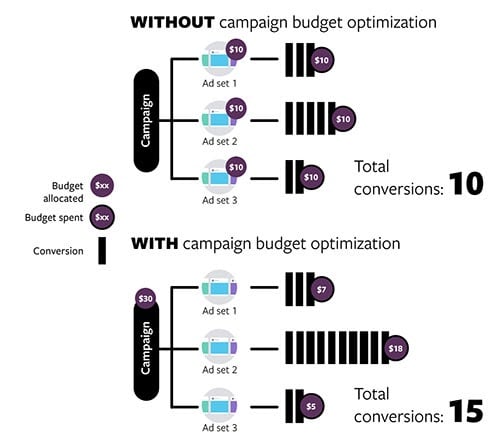
What advertisers originally loved so much about ad set level budgets is that you can control how much budget is allocated to each individual audience.
The problem with this is that you end up guessing which audience will perform better. Or, even worse, you end up setting an equal budget for each and hope all audiences perform the same.
Well, now, you no longer have to guess which audience performs best, as Facebook will do that for you. By trusting machine learning, you’ll get maximum performance from your ad sets. If Facebook starts noticing strong performance in an ad set, they will start funneling more budget to that ad set for you.
On the other hand, if your budget is being funneled to lower-performing ad sets, they will start funneling it away towards more fruitful endeavors.
The best part of CBO, however, is limiting the learning phase.
Before CBO, anytime you made big changes to your ad set budgets, you would reset the ad set back into the learning phase. With CBO, since budgets are being transferred in real-time by Facebook, it’s constantly learning and will never have to re-enter the learning phase. This is a huge time saver because we all know that restarting your ad sets from scratch is a real performance halter.
3. Automatic Placements
Automatic Placements just might be my favorite Facebook Power 5 tactic. It’s such a low-hanging fruit to help your campaigns see immediate wins.
Every time I audit a prospect or take on a new client and I see them with “Instagram-specific” or “Facebook-feed” specific campaigns and ad sets all over the place, I already know it’s going to be easy to win them over simply by implementing automatic placements.
One of the traditional “hacks” media buyers used to use would be to start with automatic placements. The second they saw Instagram performing better, they’d hyper-granulate and break out Instagram as its own new campaign with only IG as the placement so that you could control budget and creatives to try and get as much scale from IG as possible.
However, when you do that, oftentimes you’d see immediate drops in performance.
Why? Because Facebook was already giving you the most possible Instagram users that would convert on your product. If you weren’t getting more, it’s because Facebook already knew that there weren’t any more users to target that would potentially convert.
Another reason traditional media buyers would break out specific ad sets/campaigns per placement was so they could build better creatives to match that placement from the get-go.
However, Facebook has a fix for that too. It’s called “placement asset customization.”
With placement asset customization, you can now build your ads and customize how it looks visually for each placement.
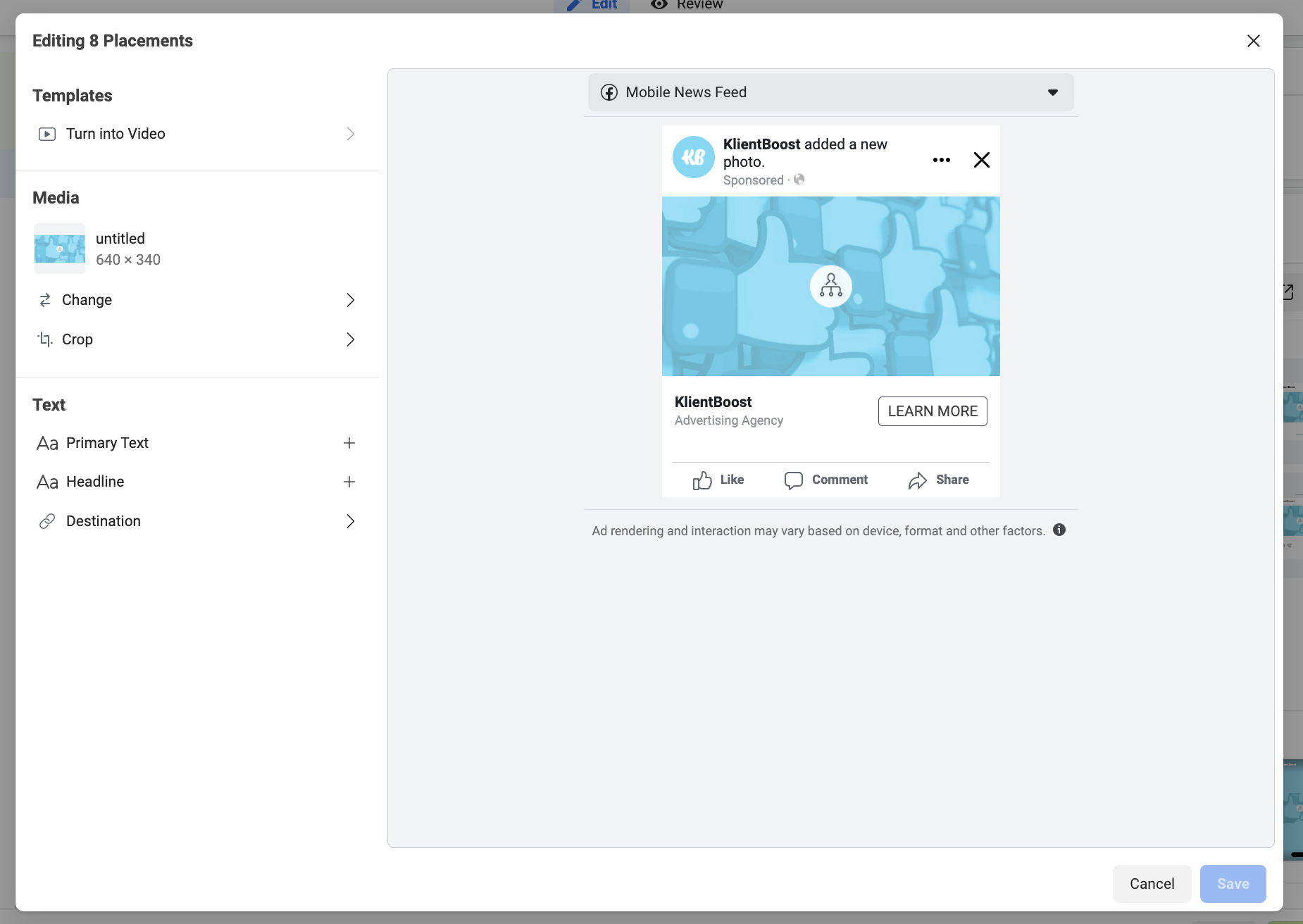
This helps eliminate the need to break out manual placement ad sets. Automatic placements paired with placement asset customization ensures that when your ad serves on any given placement, your ad visually will look its best.
Lastly, the biggest win with automatic placements is the cost benefits.
As we talked about earlier, the key to reducing your costs is to reduce your CPMs. With automatic placements enabled, Facebook will optimize your spend to the best performing placements and help reduce your overall CPMs, which helps reduce your CPCs and ultimately your CPAs.
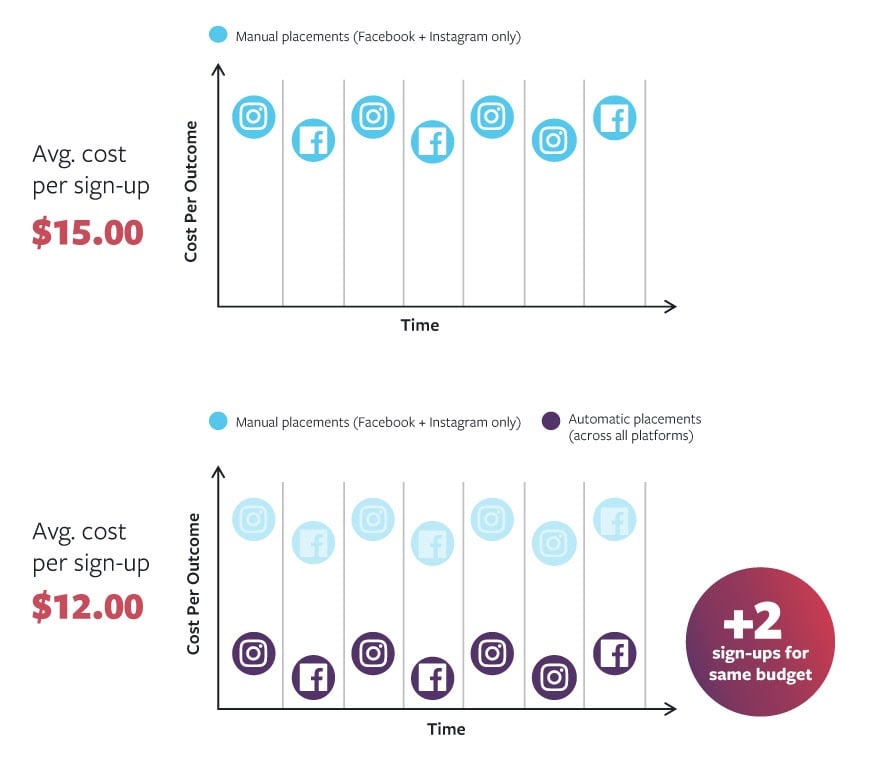
4. Auto Advanced Matching
If Automatic placements are my favorite of the Facebook Pentagon, then Auto Advanced Matching is definitely my pick for the most underutilized and underappreciated tactic. But, then again, it’s also the easiest to implement to help increase account performance.
Do y’all remember Barry Bonds? He’s a 14-time all-star, 7-time MVP, the all-time home run leader in the MLB, and is considered one of the best baseball players of all time. He’s probably better known for his association to steroids.
However, before steroids, he was still a fantastic baseball player. Before he went to San Francisco (where his link to steroids began), he was a 2-time MVP with the Pittsburgh Pirates.
Let’s compare the Facebook Pixel now to Barry Bonds:
The Facebook Pixel by itself is Pittsburgh Pirates Barry Bonds. The pixel is a fantastic tool and critical to winning with Facebook Ads. However, adding Auto Advanced Matching is basically like giving your pixel a steroid shot and turning it into an all-time great.
Essentially, Auto Advanced Matching helps you capture your customer data better. It helps make your custom audiences bigger, more accurate and helps the pixel learn exactly who, when, and how people convert on your site.
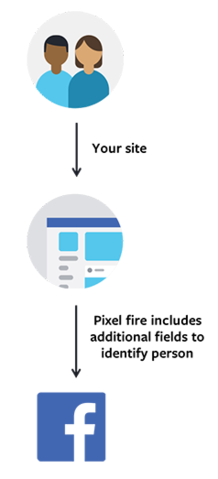
It’s as simple to implement as toggling a trigger in Events Manager, but the power it gives to your pixel is next level.
Auto Advanced Matching allows the pixel to collect cashed customer data that is collected in:
- Registration forms
- Email signups
- Newsletter signups
- Whitepaper downloads
- Etc…
When a user fills out a form, Facebook can now use that data to match it to their Facebook profile. This is incredibly powerful because it allows Facebook to better track events from users who might be using multiple devices or potentially even ad blockers.
Like I mentioned earlier, it’s super simple to turn on:
- All you do is go to your Events Manager (which is within your Business Manager), then select your specific pixel
- After your pixel is selected, you then click on settings for that pixel
- Scroll down until you see "Advanced Matching" and toggle it on
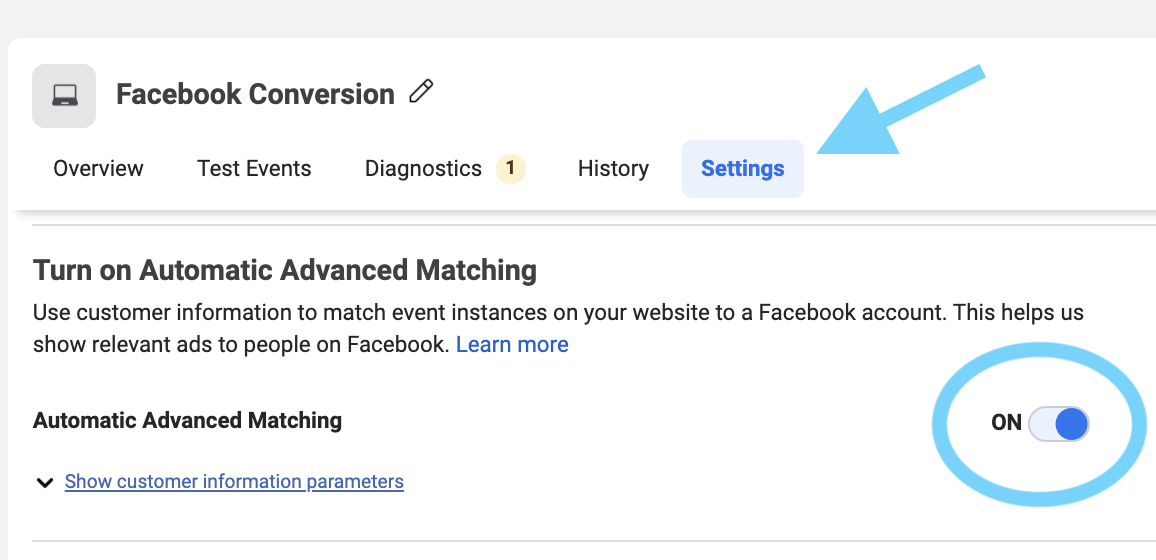
5. Dynamic Ads mastery
The last tactic of our Facebook Power 5 Pentagon is Dynamic Ads. It’s important to note that this tactic is only for eCommerce advertisers or advertisers with a product catalog of some sort.
If you are a B2C advertiser who has a subscription or service, you can still implement the previous 4 tactics to see big wins with your advertising, but this tactic won’t be relevant for you, because it requires a catalog.
The power of Dynamic Ads, as Facebook puts it, is that they allow you to personalize your ads without the manual work.
This is most commonly done with Dynamic Product Ad (DPA) retargeting.
Have you ever been on an eCommerce site, window shopped around, and then ended up not buying anything?
Shortly after, you go onto Facebook, and then that brand is targeting you again with the exact same products that you viewed? That’s DPA retargeting hard at work.
DPA retargeting personalizes the ad experience per user by showing them exactly the products that they were previously interested in.
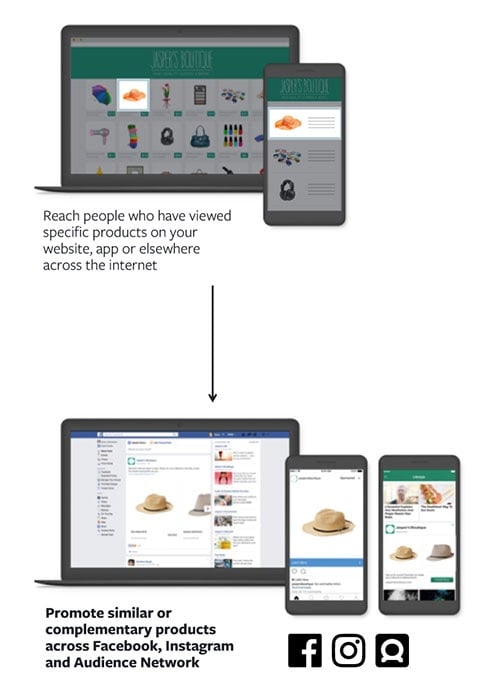
However, using Dynamic Ads through your catalog isn’t just for retargeting. They’re also a great tool for prospecting.
Facebook knows the types of products you sell through your catalog. Facebook also knows people's interests based on offline activity such as browsing behavior and what your users are interested in/follow on Facebook.
So, all-in-all, Facebook pairs up your catalog ads with relevant users across the Facebook ad ecosystem and you can kick your feet up and watch.
Where Facebook Power 5 works best
At KlientBoost, where we’ve found the Facebook Power 5 method to truly work best is with business-to-consumer (B2C) brands, not Business-to-Business (B2B) brands.
The reason for this is that with most B2C brands, you have a much larger potential audience you can reach. With B2B advertising, you have to niche down and help find your target market, which goes against the “go broad” ideology of Facebook Power 5.
That’s not to say you can’t find success pulling various elements of the Facebook Power 5 to improve your B2B Facebook ad strategy. It’s just something important to always keep in mind when building out your Facebook campaigns for your specific brand and with what you sell.
A high five for Power 5
Facebook Power 5 is something that we’ve tested extensively at KlientBoost. We’ve found it to be super beneficial and can break down our findings into 3 simple takeaways:
- Results: It helps drive better results for our clients by reducing inefficiencies and lowering our CPMs.
- Time: As the old adage goes: “Time is Money.” By trusting the algorithm and simplifying your approach, you can save hours each week from “manually hacking” the way you used to.
- Bigger Picture: By saving time from manual optimizations, you no longer have to be stuck in the muck of your campaigns and can take the time to think of bigger picture strategies and needle movers. 9 times out of 10 we find the biggest needle movers to be ad creatives, which are going to take the most time.
If things start going well and you're interested in scaling your Facebook Ads even more, here are 9 of our favorite tactics.
